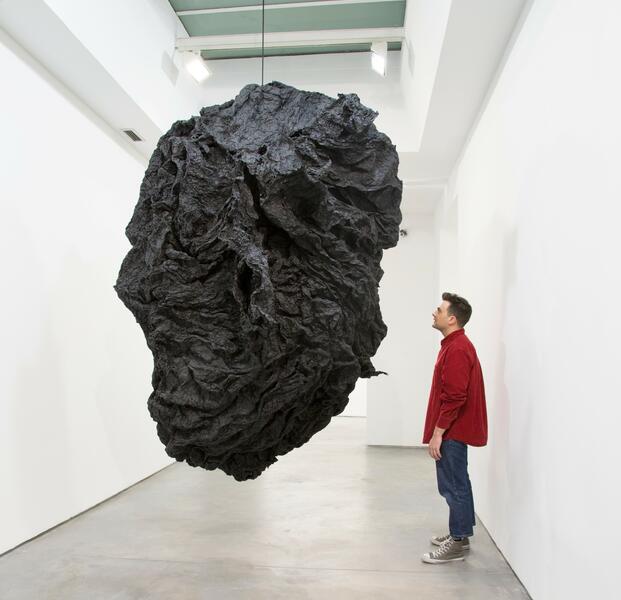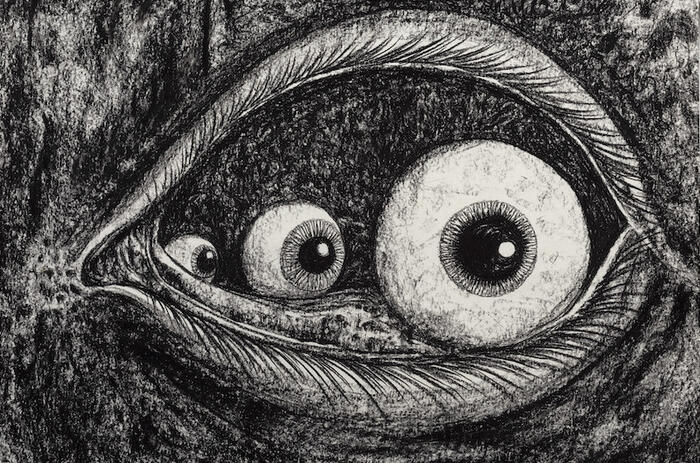THE BODY’S MEMORY - MAX ESTRELLA GALLERY, MADRID
THE BODY’S MEMORY - MAX ESTRELLA GALLERY, MADRID
From January 30 to April 4, the Max Estrella Gallery exhibits La Magdalena de Proust: Antropocentrismo cotidiano (“Proust’s Magdalene: Everyday Anthropocentrism”). The exhibition brings together the work of six international artists around the experience of the body (that is, the memory of the body), based on the famous novel by Marcel Proust.

In the hottest month of the Madrid’s contemporary art scene, just days before the celebration of ARCO Madrid, the Max Estrella Gallery presents an exhibition as international as the fair. Triggered by a text by Gregorio Cámara, the artists Eduardo Basualdo (Argentina, 1977), Diana Fonseca (Cuba, 1978), Duane Michals (United States, 1932), Hans Op de Beeck (Belgium, 1969), Bernardí Roig (Spain, 1965) and Erwin Wurm (Austria, 1954) reflect on the place of the body turned vehicle for what Cámara calls a daily anthropocentrism: a practical invitation to order, from the body, the absurd chaos that surrounds us.
Covering a multiplicity of media - drawing, sculpture, photography - the exhibition develops a dialogue that has its starting point with the madeleine episode in Swann’s Way, first book of the novel In Search of Lost Time, by Marcel Proust. The focus is, then, on the aspects that we assume as trivial and that are, above all, crossed by the senses in the human course in relation to time. "This exhibition," writes Cámara, "aims to propose a more current approach derived from the perpetual need to find our place in the cosmos." The existence makes sense in the vulgarity of everyday life, where the body is transverberated by the memory consequentially giving rise to the conscience, which manages locate itself in the center of an order of things.
The exhibition space is plotted in such a way that the importance of the body is evident instantly. In the center of the gallery hangs a black bun that occupies almost the entire aisle. Corazón Frío (“Cold Heart”), by Eduardo Basualdo, represents the importance of emotions for the understanding of this daily anthropocentrism, on the one hand, and the value of the body as a mediating agent of memories, on the other. Proust writes in the first pages of his book:"... my body, that side of my body that supported me, faithful guardian of a past that I should never forget ..." (Swann’s Way, Universal Virtual Library, 2006 ).
The works of Hans Op de Beeck and Diana Fonseca operate along similar lines. Timo, Op de Beeck’s sculpture in which a child in real scale plays marbles, challenges the most primitive past: childhood. The scene seems inconsequential, but the artist's gesture invites the viewer to deepen the memory. Las Degradaciones de Fonseca (“The Degradations of Fonseca”), although being a politically-minded abstract collage (the works are made with remains of coatings from the city of Havana), appeal to the residual character of the memory, the corporality of cities and the capacity that these have to manifest the past in a way that brings meaning to the present.
On another level, the works Giving one the finger, by Erwin Wurm and the Headless series, by Bernardí Roig, are confronted in the gallery and enrich the curatorial proposal from other lines of dialogue. Both artists use humor as the main element. Humor, in short, is resistance and enjoyment. It humanizes. "Again with the body as the protagonist element, it seems to reveal itself with humor to its transitory destiny and seeks refuge in hedonism, sensory and immediate pleasure," says Cámara in relation to the figures that pose, beheaded, with their skulls on their laps -or under their feet- in Bernardi's drawings.
That said, a fragment by Marcel Proust that can provide us with a compelling reading of the exhibition:
“And even before my brain, hesitating at the threshold of times and shapes, had reassembled the circumstances sufficiently to identify the room, it—my body—would recall from each room in succession the style of the bed, the position of the doors, the angle at which the daylight came in at the windows, whether there was a passage outside, what I had had in my mind when I went to sleep and found there when I awoke".
(Swann’s Way, Modern Library Edition, 1992)
For all those who live in Madrid and for those who in the context of ARCO approach the Spanish capital, La Magdalena de Proust: Antropocentrismo Cotidiano is not only an indicator of what the local gallery circuit presents, but also a strong example of the intergenerational and international character of contemporary curatorial projects. Similarly, it reflects the practical nature of these projects and the importance of combining different means of expression to strenghten the discourse.
GENERAL INFORMATION
Max Estrella Gallery (Santo Tome 6, inner courtyard, Madrid)
La Magdalena de Proust: Antropocentrismo Cotidiano
Curated by: Gregorio Cámara and Alberto de Juan.
Artists: Eduardo Basualdo, Diana Fonseca, Duane Michals, Hans Op de Beeck, Bernardí Roig and Erwin Wurm.
From 01/30 to 04/11
Monday to Friday from 10.30 a.m. to 7.30 p.m. / Saturdays from 11:00 a.m. to 2:00 p.m.



